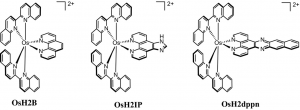July 18, 2017
Photodynamic therapy (PDT) is a strategy for treating cancer, where a nontoxic prodrug, the photosensitizer (PS), is activated by light to form reactive species that destroy tumor tissue. The advantage of PDT over traditional chemotherapy is that drug toxicity can be localized to the target region through precise spatial and temporal control over the light delivery. In this way tumors are selectively destroyed while healthy tissue is spared, leading to superior patient outcomes. Furthermore, we have good evidence that our compounds elicit an immune response, leading to the suppression of metastases.
While PDT has shown remarkable efficacy against certain cancers, its widespread adoption has been limited by relatively few PSs having been approved as clinical agents. The lack of attention to the importance of the light dose protocol has also restricted progress; PSs have usually been developed in isolation from their end use, and the one-PS-for-all-applications approach has not produced results. Our approach is tumor-centered and is inherently multidisciplinary: this group has consisted of students and researchers from chemistry, physics, biology, and biomedical engineering. We use the tools of synthetic chemistry, photophysics and photochemistry, microscopy, cell culture, and laser spectroscopy to take our treatment from the concept stage all the way to human trials.
Novel Osmium-based Coordination Complexes as Photosensitizers for Panchromatic Photodynamic Therapy
Savo Lazic, Pavel Kaspler, Ge Shi, Susan Monro, Tariq Sainuddin, Sarah Forward, Kamola Kasimova, Robie Hennigar, Arkady Mandel, Sherri McFarland, Lothar Lilge
Photochemistry and Photobiology, 2017
DOI: 10.1111/php.12767
